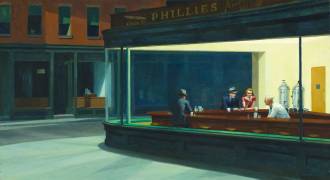Shop art print and framed art The Third-Class Carriage by Honoré Daumier
Subjects : Genre scenes
Keywords : journey, poverty, rail transport, railway, shadow, transport, traveller, wagon
(Ref : 364197) © rawpixel.com / The Metropolitan Museum of Art
The Third-Class Carriage by Honoré Daumier(Ref : 364197) © rawpixel.com / The Metropolitan Museum of Art
Customise
Your art print
The Third-Class Carriage OF Honoré Daumier

The artwork
The Third-Class Carriage
The Third Class Wagon is a painting by Honoré Daumier, painted around 1864, in which the artist denounces poverty. It is kept at the National Gallery of Canada in Ottawa, which acquired it in 1946. Daumier began another version, which he did not complete and which is kept at the Metropolitan Museum of Art in New York, to which it was bequeathed in 1929 by Madame Havemeyer.
The Third Class Wagon is an oil painting on canvas measuring 65.4 × 90.2 cm. It depicts early railway passengers seated in a carriage. In this realistic painting, Daumier chose not to depict the rich bourgeoisie travelling in first class, but the little people in third class, in order to denounce the misery that prevailed in much of French society at the time. For the artist, it was a reflection of a reality that some people preferred to conceal.
This representation of reality is disturbing, not so much because of what is shown - the characters, the clothes, the miserable children - but because of the force of the gaze. The dark eyes of the woman with the basket in the foreground, staring back at the viewer, seem terribly accusatory and convey the profound dismay of these little people in their lives of suffering and misery. In the foreground we also see a woman with her child and a young boy. In the background, we can see other people also living in suffering and misery... This painting is marked by predominantly horizontal [...]
This artwork is a painting from the modern period. It belongs to the realism style.
Find the full description of The Third-Class Carriage by Honoré Daumier on Wikipedia.
You may also like
The Réserve Muzéo I take advantage of it
- 30% !
Make good deals by browsing our Reserve : editions of our catalog which await their purchaser at a low price.























